Hebrew Picture Dictionary: Learn The Hebrew Language Through Memes
 Written byMarta Krzeminska
Written byMarta Krzeminska- Read time9 mins
- Comments0
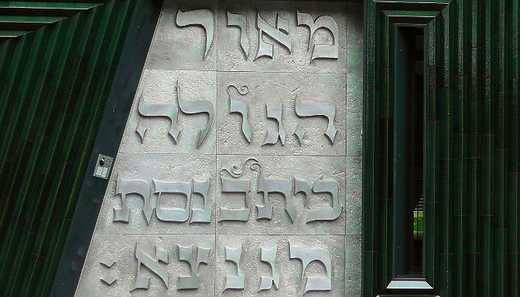
Hebrew memes.
Your friends have probably send you at least one after hearing you’re learning Hebrew.
These images can be straightforward, but sometimes… they leave you a little puzzled. You might be doubting not just your friends’ sense of humour, but also your level of familiarity with the Israeli culture.
It can be overwhelming to start learning a language like Hebrew whose culture is disparate from our own.
Apart from the intricacies of grammar, challenges of the Hebrew alphabet, and the novelty of pronunciation there is a whole extra layer to tackle as it comes to Hebrew. It’s the layer of cultural connotations.
As a short introduction to that topic I’d advise you read the Jewish Encyclopaedia or see these Hebrew apps and resources.
Kidding!
We can instead give you a short into in a fun way.
Through memes.
The original meaning of the word meme is not a funny picture on the internet.
A meme is an image or idea that spreads quickly and is easily understood by many people.
Popular pictures, street art, and — indeed — internet memes, are representations of popular topics from the Israeli history and culture.
Because these cultural memes are so prevalent, you will run into them sooner or later.
But, you know what? You don’t have to be a Hebrew master.
Even just a little familiarity with the language, together with the knowledge of these common symbols, gives you a cultural superpower.
Get ready see how much you can learn about Hebrew and Semitic culture through its symbols.
The Hebrew alphabet
Chai
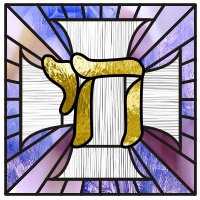
A popular pattern you’ll find on souvenirs is one made of two letters: chet and yod. It reads chai, a short word meaning life or alive.
Its symbolism goes back to the 15th century, but clearly the words remained popular until now. Even Elvis wore a chai necklace! I’m by no means suggesting he is alive though!
Each Hebrew letter has a numerical value, based on its position in the alphabet.
The first nine letters represent units (aleph = one, bet = two, etc.), next we have tens (yod = ten, kaph = 20, etc.) and then, from koph, hundreds.
That gives each word a numerical value. Can you calculate the value of chai?
To save you mental gymnastics, I’ll tell you the answer — it’s 18 (yod is 10, and chet is 8, 10 + 8 = 18). Because of the symbolic value of this important symbol, people will often give gifts and make donations in multiples of 18.
Another important pointer regarding the word chai is that it’s a part of a common phrase:
It means “the people of Israel live” and is something you might hear a lot in Israel.
Nananana
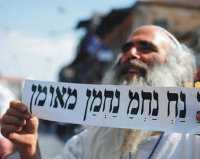
It’s not the Batman meme I’m referring to here!
When you’re in Israel, you might come across a curious sight. A group of religious-looking men, wearing yarmulkes and dressed in black and white, in bright daylight performing the craziest rave-style dance to loud music blasting from a portable radio.
Meet the Breslover Hasidim.
The mantra they sing is a praise of the founder of the branch of the religious movement they follow — rabbi Nachman. It reads na, nach, nachma, nachman, meuman. Try saying it quickly a couple of times!
The line is based on four letters of the name Nachman: nun, chet, mem, and nun.
You can imagine, repeating this line over and over provokes a kind of a religious trance.
You will also find it printed on t-shirts, cards, and yarmulkes.
If you’re looking for a curious souvenir from Israel, that’s definitely something that fits into that category.
Adonai
It’s forbidden to utter the name of god in Judaism. Some more religious people won’t even write it!

The name is composed of four consonants — yod, he, vav, he — which are also referred to as the tetragrammaton. Isn’t that the coolest word?
Whenever the name Yahweh appears in the Torah, it’s written with the correct consonants, but the vowels do not match the appropriate pronunciation.
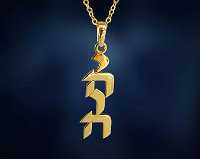
The vowels come from another word, adonai, meaning “my master”.
This is a common euphemism for god, which the reader is allowed to utter. It looks like this:
Why am telling you all this? Because the name of god appears on pendants too.
And, we don’t call them “Yahweh pendants”, but “adonai pendants”. Now you know why!
Ahava
Leaving the more religious connotations aside, another popular four-letter combination found on decorative items is a more universal word.
Ahava means love. It’s also a brand of dead-sea infused cosmetics.
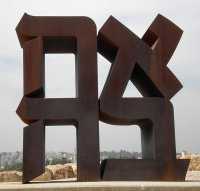
You might have been “attacked” by Israeli sales representatives of Ahava soaps and creams even abroad — it’s one of the more popular Israeli export products.
Ahava is also a title of a well-known monument by Robert Indiana, one that stands in the Museum of Israel in Jerusalem:
Football
Maccabi
Names of sports teams around the world often have war or fight-related connotations.
A group of famous fighters in the history of Israel were the Maccabees — a relatively small team of zealots who, in the 160s BC, fought against the Roman empire. They were known for their innovative tactics and speedy reaction times.
With such impressive credentials, no wonder that the Tel Aviv, Be’er Sheva, Netanya, Petah Tikva, Haifa (and probably a few others!) football teams are named after the Maccabees.
Maccabi is also a name of a popular beer, bira Maccabi — a Heineken of Israel, if you will.
When you go to a pub and hear people talking about Maccabi, don’t worry, there are no fighters or footballers around, they’re just talking about beer!
Beitar
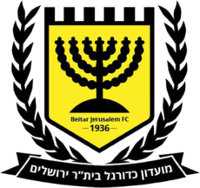
Talking about football can be a good way to make friends, especially once you are already in a pub drinking your bira Maccabi.
And, we can’t move away from this topic without mentioning one of the most famous football clubs of the Israel’s premier league: Beitar Jerusalem.
Sadly there is no beer associated with this name.
Symbols
Hamsa
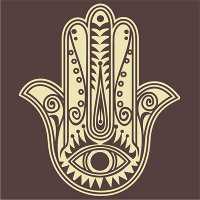
This symmetric hand symbol is not unique to Israel.
Prevalent throughout the Middle East and Turkey, hamsa serves as an amulet, a talisman protecting against the evil eye.
You will see it on the walls in people’s homes, as a pendant, or an element of jewellery.
Sometimes a hamsa will include a centrally-placed drawing of an eye, or a blue jewel symbolising it.
It’s unclear whose hand it is exactly. The only common factor in all interpretations is that it’s a female hand.
Regardless whether it belongs to Fatima, Mary, Venus, or your neighbour Ms Stevenson, hamsa remains a lovely decorative symbol of luck and protection.
People
And now we’ll learn the names of all Israeli presidents.
While this can be a fun pass time (and I’m sure there is someone who made a course about it on Memrise), for a start there are just two figures from the Jewish/Israeli history that you need to know.
Herzl
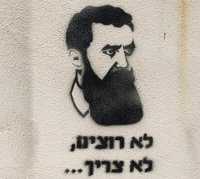
The founder and leader of the Zionist movement is a controversial figure.
His leadership eventually led to the formation of Israel, but some of the tenets of Zionism can also be utilised by extremists as a justification for political wrongdoings.
If you see a tired, very heavily-bearded face anywhere you can be pretty sure it’s Herzl. Here is an example of Herzl themed street art.
Rabin
Yitzhak Rabin perhaps doesn’t have such a street-art friendly face as Herzl, but his legacy is just as impressive.
Twice a prime minister of Israel, he was one of the first politicians to actively work on the Israeli-Palestinian peace process.
This effort resulted in the famous Oslo Accords and him, Shimon Peres, and Yassi Rafat jointly receiving the Peace Nobel Prize in 1994.
Just like with Herzl you will see places, parks, and streets named after Rabin. Most famous being of course Rabin’s Square in Tel Aviv — a place of his assassination.
Yup, Yitzhak Rabin was shot in 1996, an event which provoked a public outcry.
To the shock of most of Israel, an iconic mural referring to Rabin’s assassination was in 2018 painted over by the Tel Aviv municipality. The drawing represented the security footage just before the assassination took place.
I also recommend a short story titled Rabin’s Dead — a 6-minute read by one of my favourite Modern Israeli writers Etgar Keret. Read it here and think: would you approach and understand the text the same way without knowing a little bit about Rabin?
When talking about Rabin, we can’t not mention the word chaver, — friend.
Why is it related?
At Rabin’s funeral Bill Clinton saluted him saying “shalom, chaver” — good bye friend.
Afterwards chaver became a widely-used nickname, and Clinton’s phrase is an opening line of many articles dedicated to Rabin.
A whole song was inspired by this phrase.
Written by a renowned Israeli writer, David Grossman and performed by a rapper Hadag Nachash, Shirat ha-sticker (the sticker song) is a mix of phrases found on bumper stickers.
It also makes a reference to one of the cultural items mentioned earlier in the article. Can you hear which one?
More about chaver on StreetWise Hebrew podcast episode #2. Just like Keret’s story, it’s only 6 minutes long.
Netanyahu
This is a more modern reference.
I only mention it because I remember how long it took me to make the connection between the name Benjamin and the nickname Bibi.
Bibi is the diminutive of Benjamin — the first name of Israel’s Prime Minister Benjamin Netanyahu.
He is commonly referred to this way in the media.
A phrase you will often hear from those who don’t support his policies is “Bibi ha-bayta” — Bibi go home. One of Bibi’s famous appearances, and a source of many memes, was his address to the UN in 2017.
He talked about the Iran’s nuclear program using an image of a large bomb and drew a red line over to symbolise the urgent need to stop Iran’s work.
Reading Hebrew is not essential to understanding the image above.
It’s enough to have had only limited exposure to bags of crisps. It reads: “From around here, there are no crisps anymore but just air” — which I’m sure you’ll all agree is a frustrating state of affairs.
There are many other popular concepts in the Jewish culture that get mentioned in casual chats, and referenced in the media.
For this post I chose to introduce more visual concepts, less obvious than the star of David.
They should serve as a good introductory basis for understanding at least some of the references in everyday Hebrew conversations, posters, street art, or Facebook posts.
 Grab the link to this article
Grab the link to this article